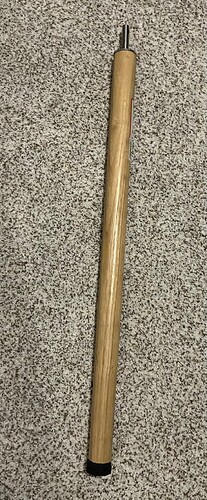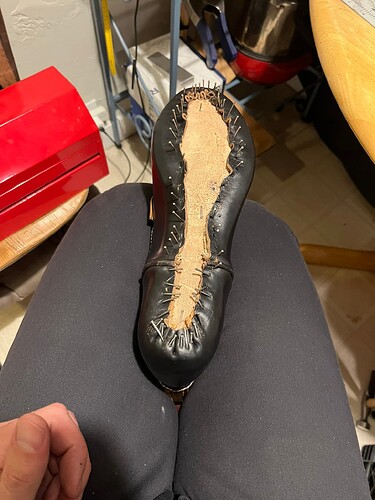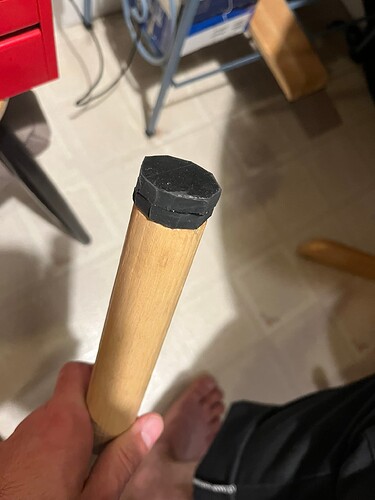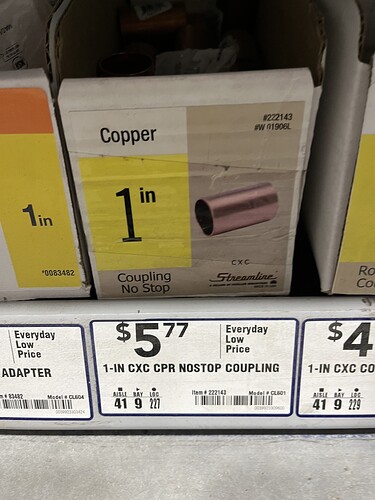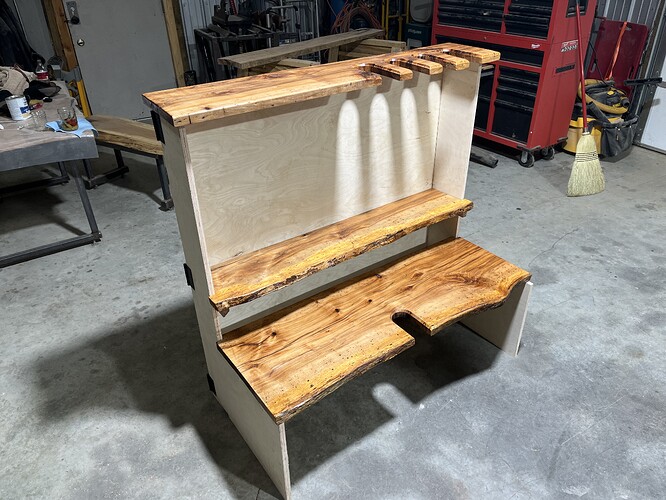After doing all kinds of arm contortions to keep lasts from sliding up and out while lasting heel seats, I finally got around to building my first lapjack—basically a last pin set in the top of a stick tall enough hold between the legs while seated. My direct inspiration was D.W. Frommer II’s Western Packers book, where he mentions the tool and gives a rough plan.
My shopping list was:
| Part | Source | Cost | Notes |
|---|---|---|---|
| shovel handle, 1½ inch max. diameter | ACE Hardware | about $15 | cut down to length at widest part |
| 12mm×200mm stainless steel round rod | Amazon | $13 for 2 | set in handle, then cut down so 50mm protrude |
| 1½ inch fender washer, 3/8 inch opening | ACE Hardware | less than $1 | hole filed out to 12mm |
| scrap rubber sheet | cut into rounds to make a non-skid bumper for the bottom | ||
| two-part epoxy | washer to top and rubber to bottom |
Apart from some kind of rough saw to take the handle down to length, you will also need a drill and some smaller drill bits to pilot and widen the hole before finishing with the big 12mm bit.
A few tips:
I should have just bought a cheaper, shorter 100mm round rod and set 50mm in and 50mm out. Avoid cutting steel rods where you can.
I tried the best I could to drill the hole perfectly centered and perpendicular with a hand drill, no drill press. It didn’t turn out perfectly straight, but it seems plenty good enough.
Don’t be like me and try to drill out the fender washer…unless you have a much better setup for holding the round washer still while you drill it. I ended up using some cheap little needle files I had lying around. In metric countries, there may also be 12mm washers at hardware stores.
I was paranoid that the wood might split as I drilled, so I put a hose clamp around the end while I was drilling. I don’t think that was necessary.
You could surely substitute a thick enough dowel or chair leg or other tool handle for the shovel handle I used, which happened to be of American Ash. Frommer’s book mentions pickaxe handles.
If the bottom of your wooden stick is 1½″ or narrower, you might buy one of those anti-skid rubber feet sold at hardware stores for chair and table legs, rather than cobble together a bumper from scrap.
D.W. specified a length of 20 inches, but I ended up making mine a few inches taller, since I sit on a kitchen chair, rather than a low stool. I’m 6 feet 2 inches tall, so my knees come a fair way off the ground when bent ninety degrees to make a flat lap. Plus I can always shorten it later if I want the top deeper between my legs.
Finally, D.W.'s book specifically mentioned having a blacksmith fashion a collar to go around the top of the stick at the top, rather than a separate last pin driven into the wood. I suppose time will tell whether my lesser design holds up under hobby work loads.
